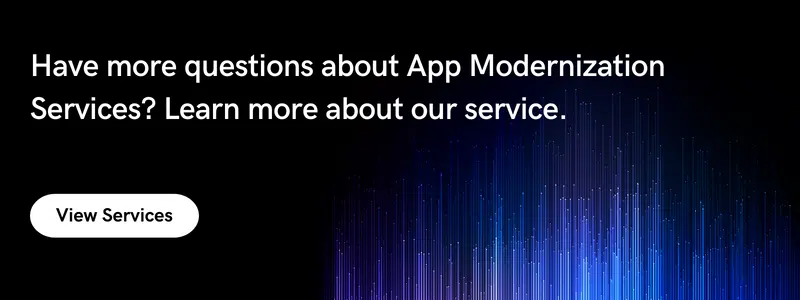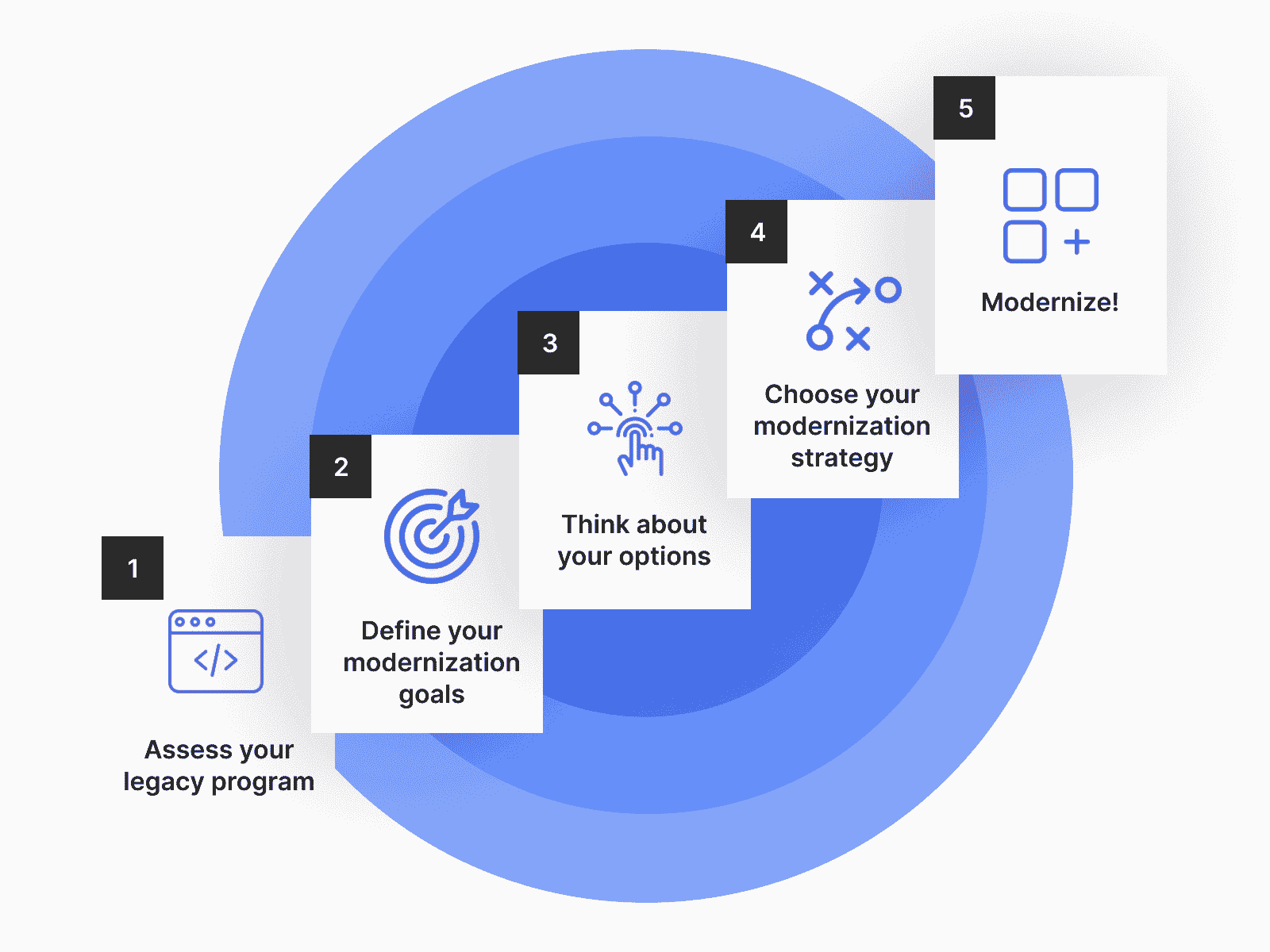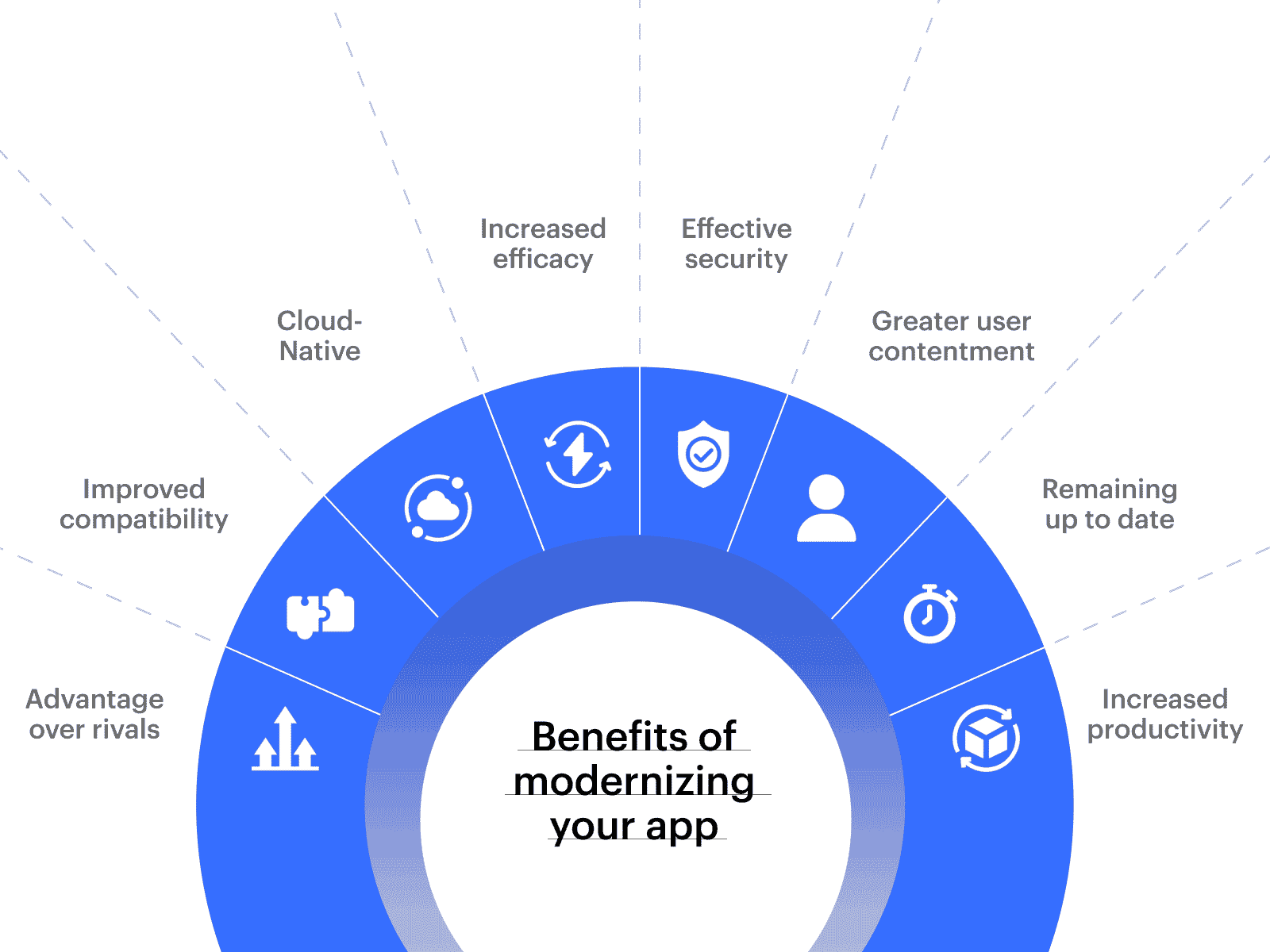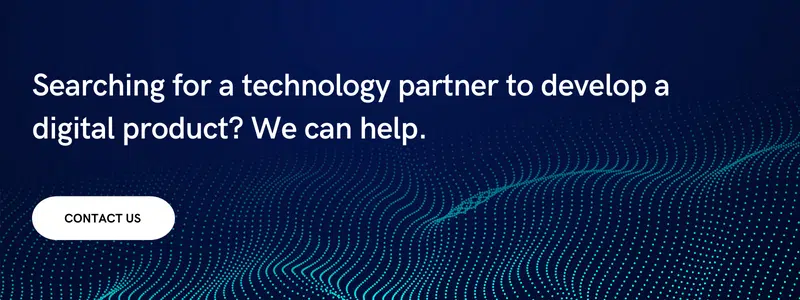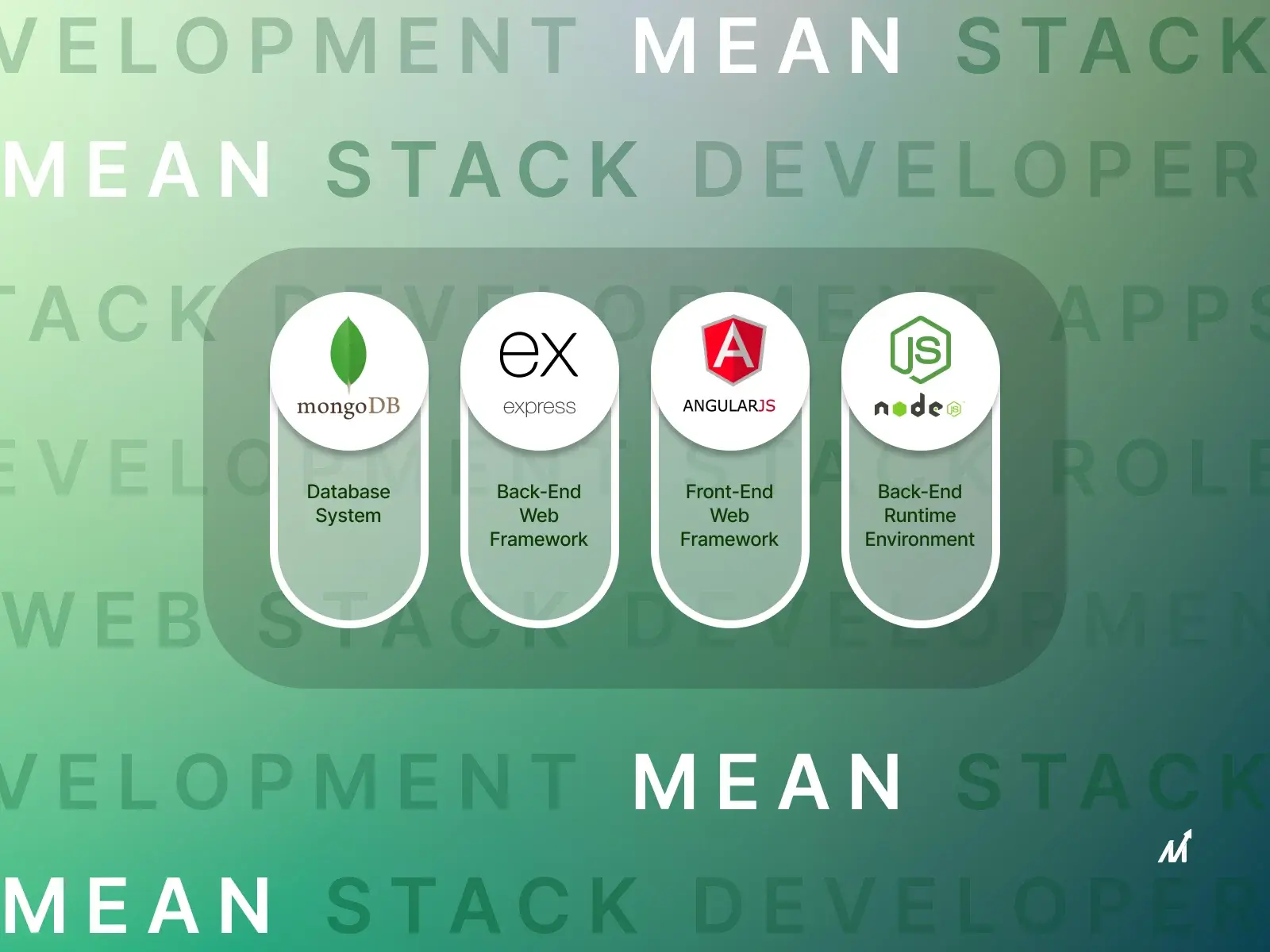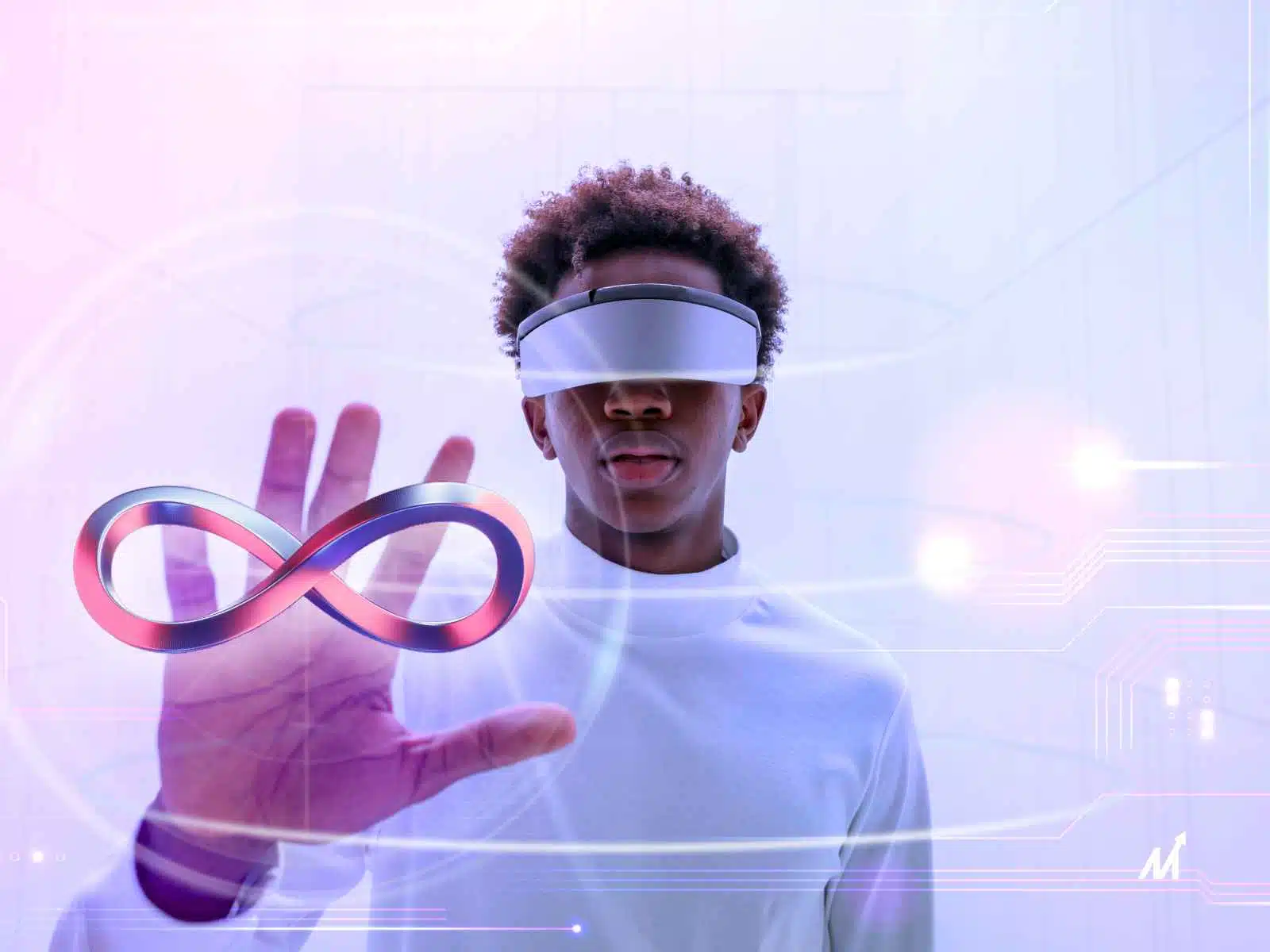Enterprise App Modernization: Introduction
Time is changing, and so is user experience. While companies are willing to go the extra mile for customer satisfaction, customers expect more pertinent business experiences. It’s a clear and competitive way of ‘give and take in the current industries. In its simplest form, enterprise app modernization refers to modernizing current legacy apps or creating brand-new ones to fit business goals better.
And so, interactions with a client in today’s time have become a pressing issue. One must go beyond the transactional aspects and incorporate components that evoke a sense of fulfillment with a customer/client. But how? By deploying more effective cloud-delivery techniques for new applications. To meet these new expectations, there must be a balance with the modernization of old apps.
Do you know that almost half of leading IT decision-makers voiced worry about the challenging nature of apprehending new technologies and the growing complexity of multi-cloud setups? Addressing this and much more, this article will discuss the need for enterprise application modernization services for better customer experiences and spill beans about legacy app modernization. Read more below.
Enterprise App Modernization: Elevating The Customer Experience
Modernizing, businesses may avoid using obsolete code and benefit from cutting-edge technology. In addition, redesigning legacy systems gives businesses the flexibility and agility they need to respond to pressing business needs and embrace chances for expansion.
A single product, service, or brand is no longer enough to entice today’s tech-savvy clients. They are loyal to a full experience instead, and a company’s app is crucial in establishing that entire product vibe. They have little tolerance, and if it takes your app longer than three seconds to load, 40% of consumers will stop using it.
You must figure out how to consistently deliver a compelling user experience across all of your apps if you want to succeed and maximize the potential of your mobile applications.
Modernizing Apps: What To Do?
You can start by putting yourself in the user’s position to have a genuinely effective end-user experience.
Must-Haves For Functionality:
You should start by posing inquiries on the following functionality fundamentals:
- Does the app function as it should? The user will leave it short if your program doesn’t meet expectations.
- How quickly does the transaction respond? The speed of calls to back-end systems must be maximized.
- Are you able to react swiftly to crashes and problems?
- Even though all apps have bugs, not all businesses can quickly find and repair problems to prevent a bad user experience.
Enterprise App Modernization: How To Apply For Better Customer Experiences?
The issue is clear; dealing with outdated software and technological debt limits a company’s capacity to change, reducing its competitiveness over time. To address this, you must refer to an experienced mobile app development company that can help you with remedial transitions.
Here are five steps to help you modernize your app.
Step 1: Assess Your Legacy Program
A thorough study of your software program should be the first step. What immediately stands out as ideal or appropriate, and what may use changes, repairs, or needs to be replaced? Keep a note of these atrocities and start managing them one by one.
Step 2 – Define Your Modernization Goals
Goals must, first and foremost, result from your company’s KPIs. For instance, a consulting firm’s KPIs are often centered on Project Margin and Resource Utilization Rate. The objectives may be to shorten the time needed to complete a time report, complete administrative activities, or assign team members to a new project.
But just remember that though your legacy app modernization plan should solve IT issues, it may put you a step ahead of your counterparts only if your goals are defined.
Step 3: Think About Your Options
Investment is required for enterprise application modernization. The costs associated with the development workload and the software cost are already known to you. Still, this transformation requires extra resources you may not have thought about.
Acquiring more workers, outsourcing qualified people, or educating your IT crew on new technologies is necessary. Onboarding the users and assisting them in understanding the tool will come after the technical staff has become skilled with the new system. It will ultimately save time and money.
Step 4: Choose Your Modernization Strategy
Making a strategic plan with a prioritized list of short- and long-term actions is the last stage before the launch. If you don’t intend to oversee every endeavor yourself, appoint task managers and hold them responsible for meeting KPIs.
Code review is the ideal place to begin your enterprise app modernization journey. It’s a productive approach to addressing errors, tidying up the current code base, and finding potential areas for future development. A UX audit evaluates behavioral, quantitative, and qualitative information about system usage and offers practical advice about the true situation and condition, avoiding assumptions at all costs. This is another helpful modernization technique.
Step 5: Modernize
Once the procedure is underway, don’t forget to pay attention to the KPIs again. Consult your team and other program users (clients or business partners) during the interim. Assuring them of the benefits of the changes and providing all required assistance as they transition to a new software platform.
Just know that change is the only constant, which implies technology and how we utilize it. Thus, make the most of your first modernization to understand things better and prepare for the next one!
Enterprise App Modernization: Benefits Of Modernizing Your App
Let’s examine some potential advantages that application modernization potentially brings about:
1) Advantage Over Rivals
Adopting application modernization gives you an advantage over your rivals while they are still considering it. Modernizing the apps will double down on the organization’s usage of digital technology. Your company can combine contemporary platforms and technology as a result of modernization, outpacing the competition.
2) Improved Compatibility
The compatibility of historical applications with new platforms, technologies, and code is improved via modernization. Additionally, it allows businesses to link their applications effortlessly, improving their ability to fulfill present and future company requirements.
3) Cloud-Native
Organizations may redesign their old apps to become cloud-native ones with the help of modernization. As a result, you may take advantage of cloud advantages like quicker market time, flexibility, agility, and cheaper expenses.
4) Increased Efficacy
Application modernization boosts operational effectiveness and process efficiency. Apps can receive regular updates that include bug fixes and security updates. The load on IT operations is reduced through modernization, which ushers in operational simplicity.
5) Effective Security
In a recent poll, 87% of IT decision-makers acknowledged that outdated programs increase a company’s susceptibility to security risks. This is due to the incompatibility of outdated programs with current authentication and security standards. Updating your apps may significantly reduce the security risks that older systems provide.
6) Greater User Contentment
Using old systems may be a big nuisance, whether it’s for your staff or consumers. However, client satisfaction and brand recognition will increase by modernizing programs with a polished user-facing interface, cutting-edge functionality, and novel features.
7) Remaining Up To Date
Making the most of digital technologies, such as AI, machine learning, big data, and the cloud, is made possible via application modernization. It helps create a flexible basis for future innovation while transforming your IT environment based on the most recent commercial trends.
8) Increased Productivity
According to IBM, updating old stems might increase developers’ efficiency by more than 40%. As a result, engineering teams may become more productive and speed up time-to-market by modernizing apps and enabling access to improved developer services.
Enterprise App Modernization: Need Of The Hour
The epidemic and the following lockdown have pushed digital adoption and impacted several industries. Life as we once knew it has altered due to e-commerce, cashless payments, no-touch deliveries, online health consultations, and digital schools.
Given the rapid pace of technological advancement in these times, many organizations were compelled to implement technology swiftly and in a futuristic manner. Therefore, the modernization of old applications has become imperative when resource efficiency and technology adoption are paramount.
Modernizing legacy apps simply refers to updating or enhancing software consistent with more contemporary and emerging computing technologies. At the same time, enhancing technology adoption’s strategic and operational functions, using more modern languages, frameworks, and infrastructure platforms. Additionally, updating or implementing the modernization of apps enables businesses to fully utilize existing technological infrastructure and assets, extend their lifespan, and take advantage of the greatest features of contemporary technology while maximizing resources.
Is Migration To The Cloud Crucial For Enterprise App Modernization?
For many firms, switching to the cloud represents a turning point. An established company’s choice to switch from a data center to the cloud is frequently made at the C-suite and board level. How well your team plans, comprehend the subtleties, and performs to support the organization’s strategic business objectives will determine how well your firm navigates the numerous considerations involved and achieves the intended reward.
Your company must comprehend, among other things, cloud migration, cloud-native architecture, and application modernization to get the full return on investment (ROI) from such a cloud transformation. The three phrases all have to do with optimizing apps for the cloud environment.
Enterprise App Modernization: Key Technologies
Current cloud-native technologies like Containerization, Serverless, Microservices, and PaaS must be used for legacy app modernization. However, the massive scope of modernization necessitates that the technology framework concentrates on constructing DevOps and quality automation channels that can continuously reduce development and maintenance costs. It can also help in improving operational excellence and updating functional capabilities.
Additionally, enterprises transition to cutting-edge technologies on 3 PaaS patterns: classic, custom, and public, which will be drastically helpful in leaving behind open-source technologies with little potential for reuse. These also include hybrid, public and private clouds integrated with what we know as on-premise environments.
Can Modernize The App Result In Profits For Your Business?
Enterprise app modernization helps broaden a company’s focus, enables you to examine novel situations, inspires fresh inventions, and creates new business opportunities. As a result, your bottom line costs go down, your profit margin goes up, and your return on investment rises.
How Can Markovate Help With Enterprise App Modernization?
Markovate’s app modernization services underline the need for a thorough development plan for full and well-defined requirements. Our team of experts will walk you through the entire process and ensure that what you want is exactly what is delivered, helping you turn your app-centric visions into technical realities.
Enterprise App Modernization: FAQs
1. Why is application modernization important to customers?
Making the most of digital technologies, such as AI, machine learning, big data, and the cloud, is made possible via application modernization. In turn, the customers make the most of these updates and get a rich user experience.
2. What is the biggest factor in deciding to start the modernization process for an application?
Indicators like Net Promoter Score, Expense of Service for Product Release, Return on Investment, Percentage of Service Delivery Agility, Percentage of Automation, Average Resolution Rate, Test Coverage, and many more must be understood in addition to Time to Market (TTM), which is significant.
3. What is an example of legacy modernization?
Computers running MS-DOS are one example of legacy modernization.

I’m Rajeev Sharma, Co-Founder and CEO of Markovate, an innovative digital product development firm with a focus on AI and Machine Learning. With over a decade in the field, I’ve led key projects for major players like AT&T and IBM, specializing in mobile app development, UX design, and end-to-end product creation. Armed with a Bachelor’s Degree in Computer Science and Scrum Alliance certifications, I continue to drive technological excellence in today’s fast-paced digital landscape.


